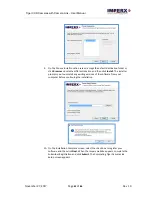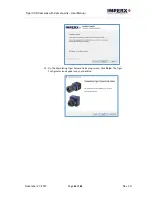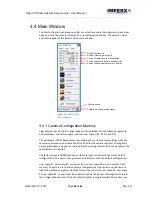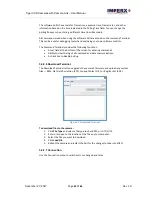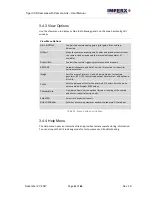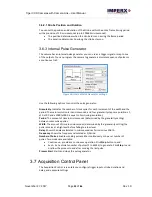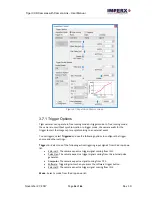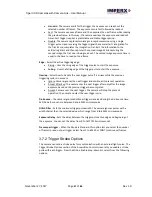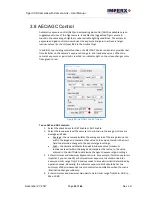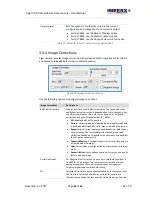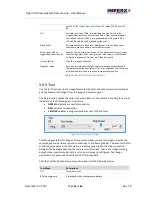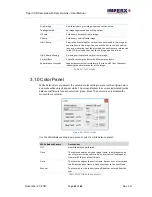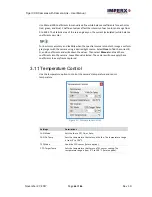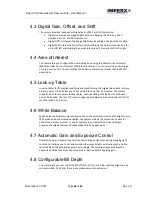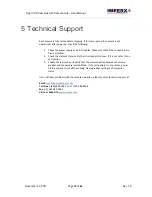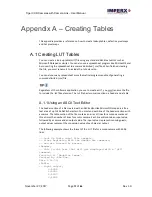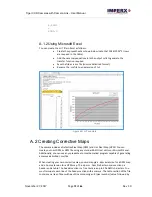
Tiger CCD Cameras with Camera Link
– User Manual
November 27, 2017
Page
57
of
86
Rev 1.0
•
Standard. The camera waits for the trigger, then exposes and reads out the
selected number of frames. The exposure occurs first followed by readout.
•
Fast. The camera exposes a frame and then exposes the next frame while reading
the previous frame. In this way, the camera overlaps the exposure and readout
times. Fast trigger requires a predictable and stable trigger period.
•
Double. The camera captures two images in rapid succession using a single
trigger pulse. Upon receiving the trigger signal the camera starts integration for
the first frame, completes the integration, transfers the information to the
vertical registers and then captures the second image. While capturing the
second image, the first one is being read out. The second image exposure time is
equal to the time to read out one frame.
Edge
–
Select the active triggering edge:
•
Rising
–
Uses the rising edge of the trigger pulse to start the exposure.
•
Falling
–
Uses the falling edge of the trigger pulse to start the exposure.
Overlap
–
Select how to handle the next trigger pulse if it arrives while the previous
triggering cycle is in process:
•
Ignore. Camera ignores the next trigger and continues its present operation.
•
Accept After Exp. The camera uses the next trigger after only after the image
exposure based on the previous trigger has completed.
•
Accept. Camera uses the next trigger. The camera will stop the present
operation, then reset and start the new trigger cycle.
De-bounce
–
The camera ignores additional triggers received during the de-bounce time.
Set the de-bounce time between 0 and 65535 microseconds.
Glitch Filter
- Sets the minimum trigger pulse width. The camera ignores pulses with a
width shorter than the selected value, which range from 0 to 65535 microseconds.
Exposure Delay
- Sets the delay between the trigger pulse active edge and beginning of
the exposure. You can set the delay from 0 to 16777215 microseconds.
Frames per trigger
–
When the Mode is Standard, this option lets you select the number
of frames to read out per trigger. Select from 1 to 65530 or CONT (continuous) frames.
3.7.2 Trigger Strobe Options
The camera can send a strobe pulse for synchronization with an external light source. The
Trigger Strobe Options section of the Acquisition Control screen lets you enable a strobe
pulse with each trigger. From the Strobe Enable drop-down list, select from the following
options:

